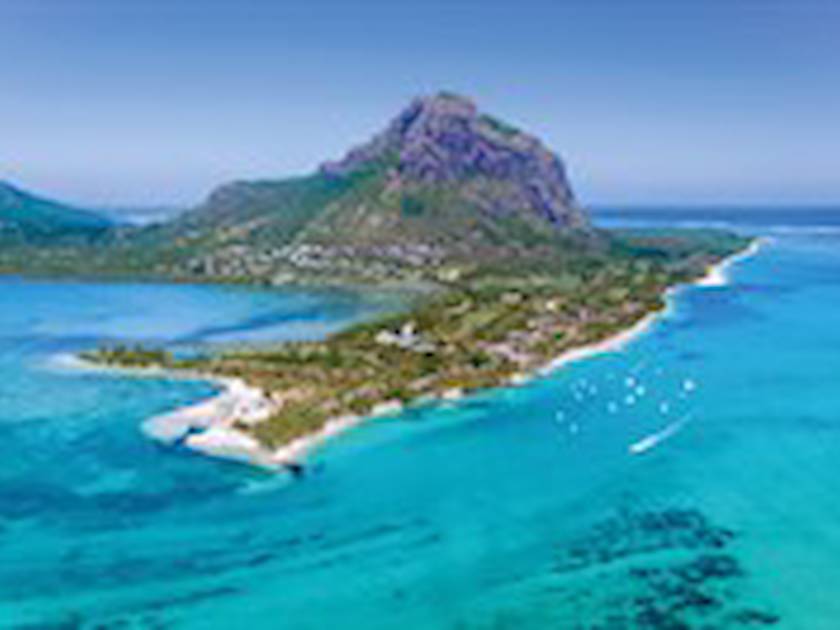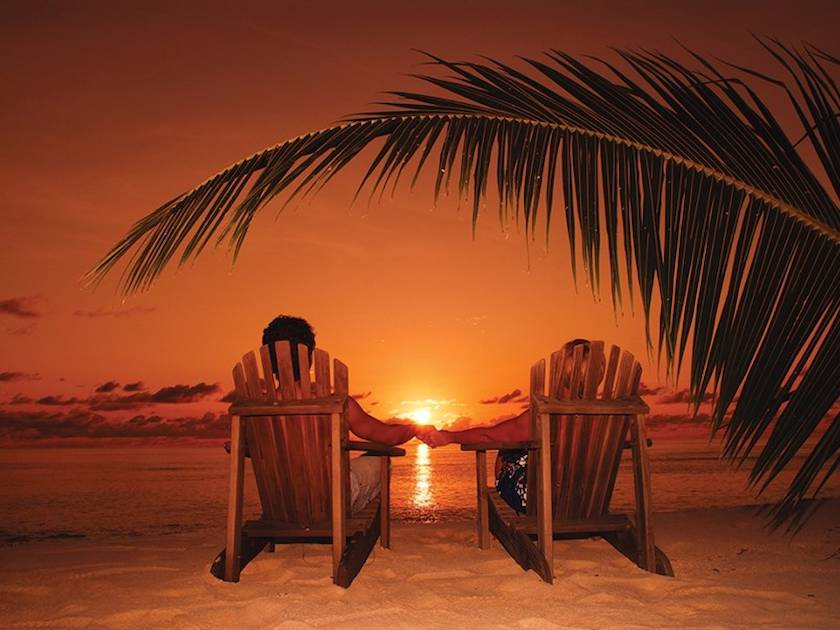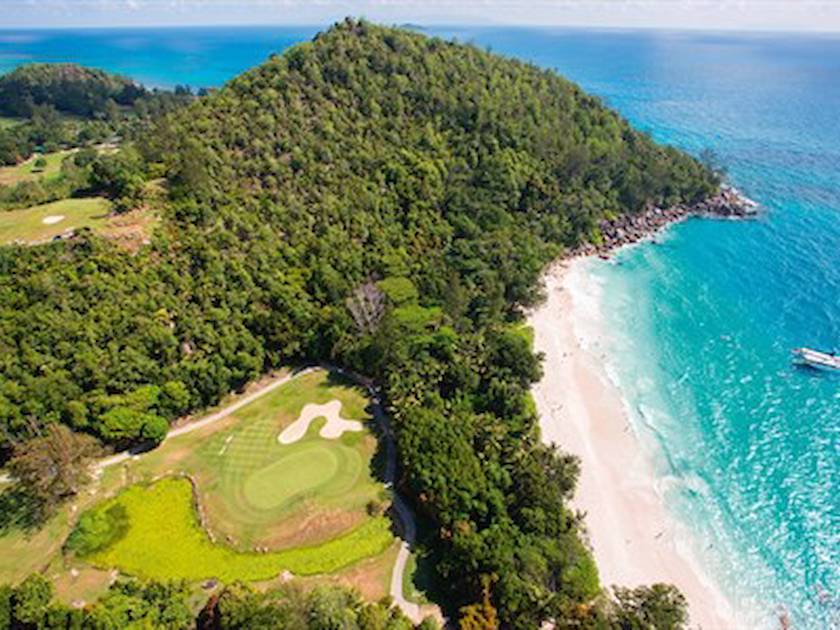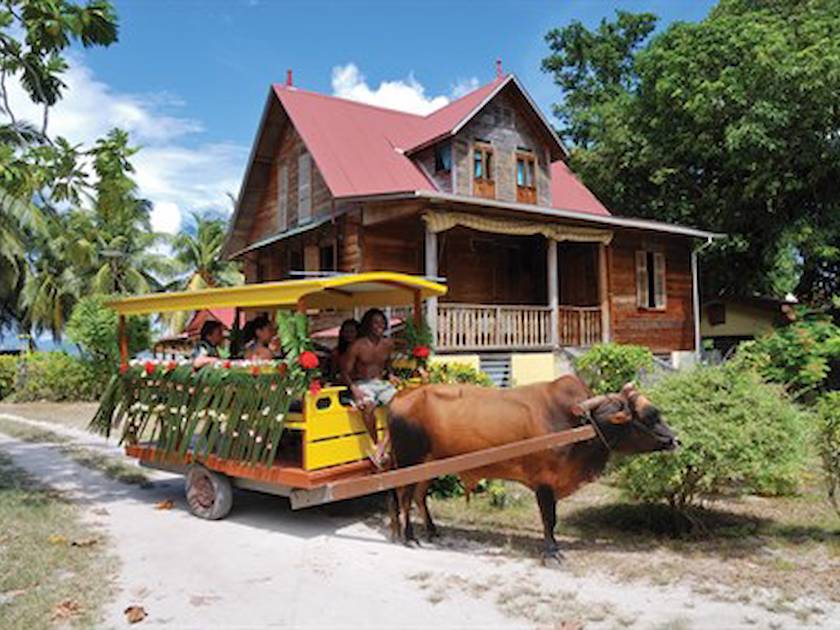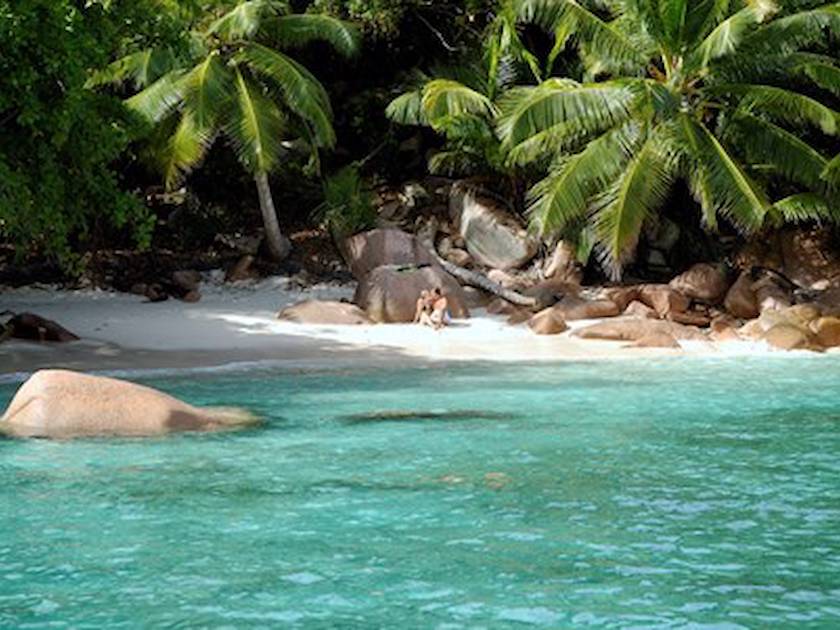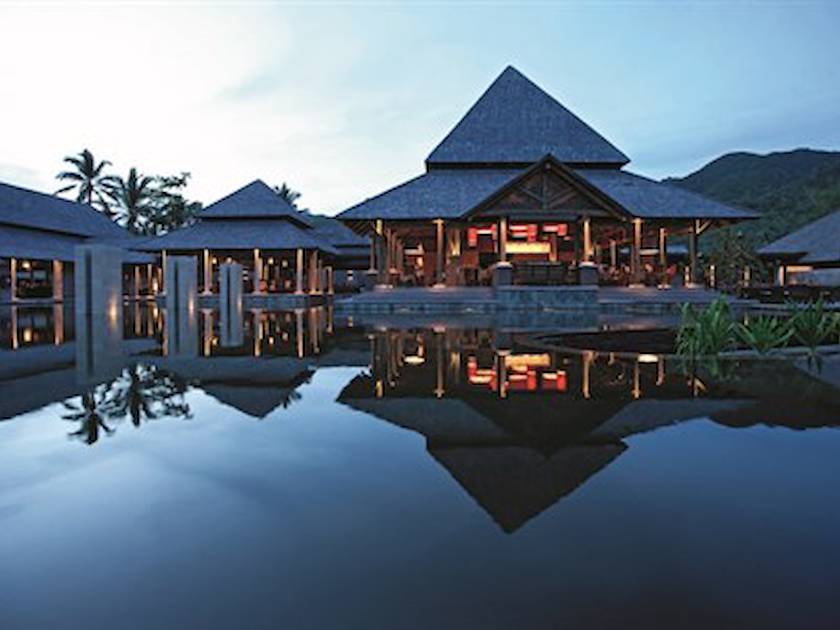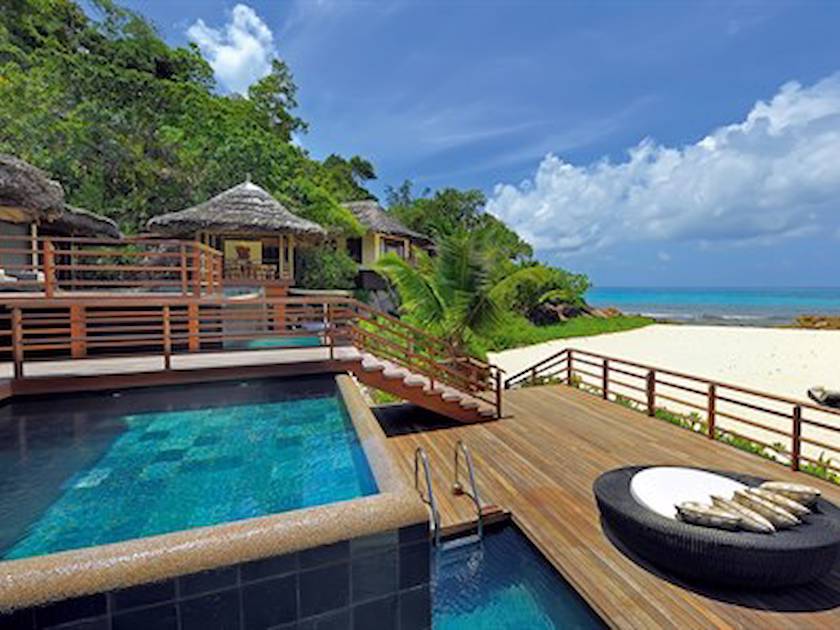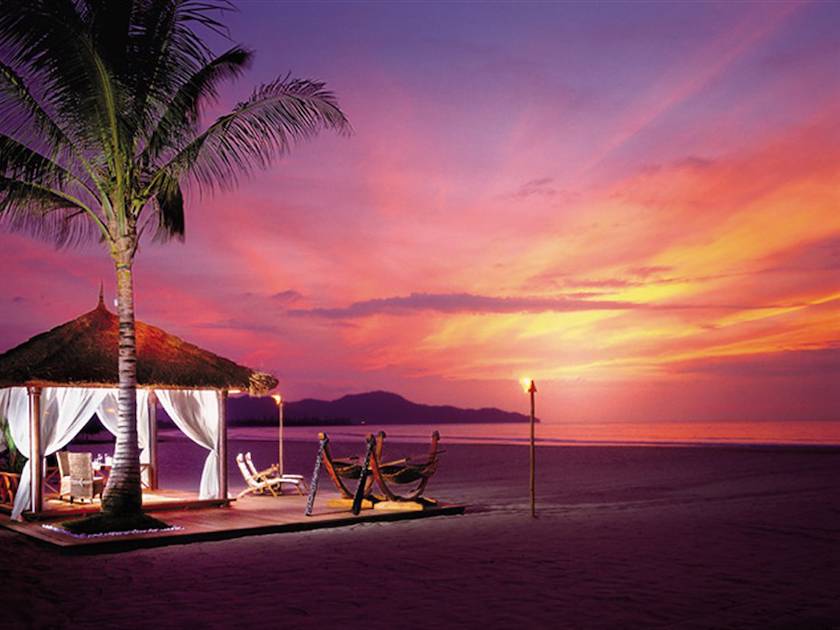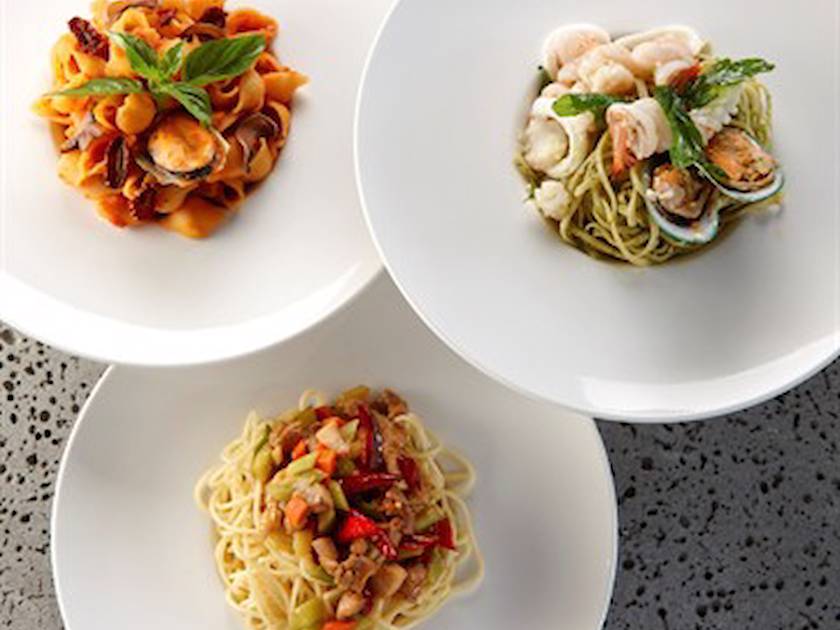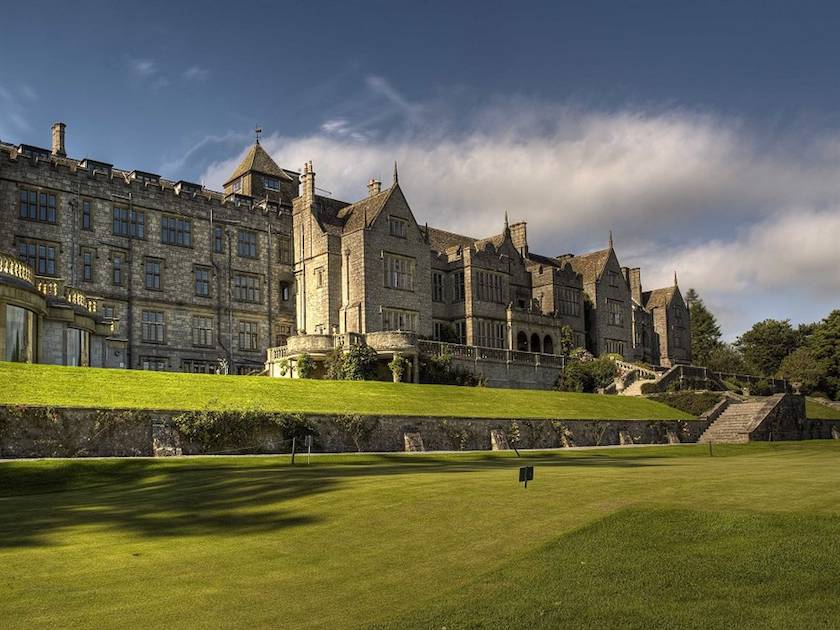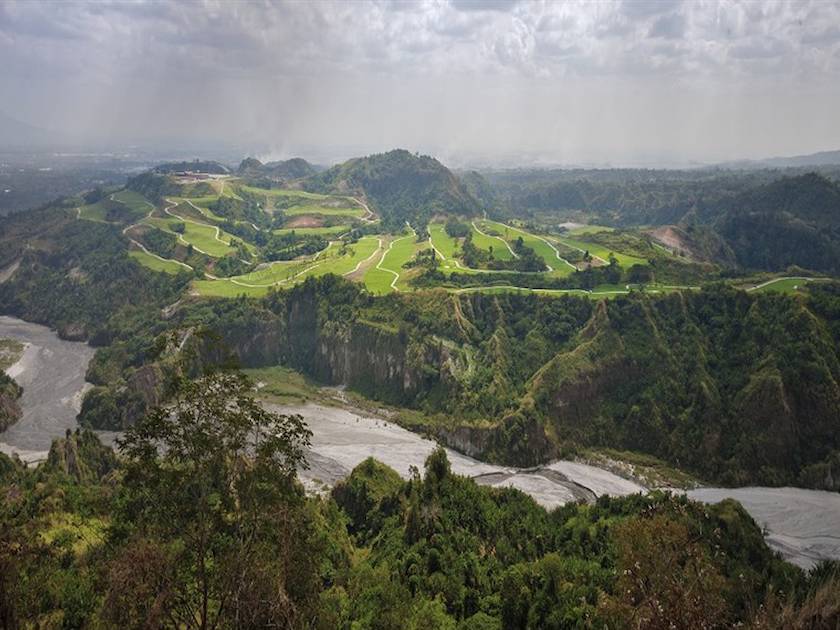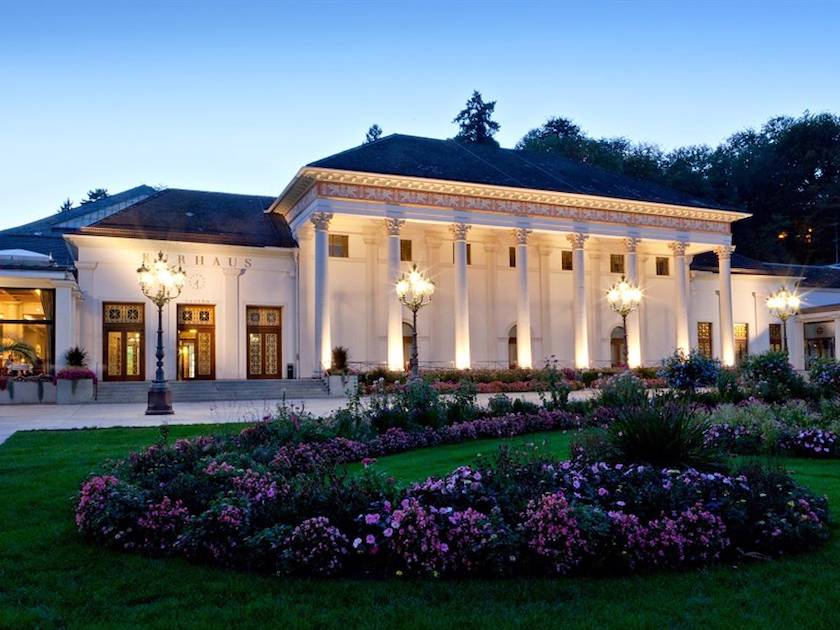Playing golf in the Seychelles
This archipelago of 115 islands – many of them uninhabited – is the archetypal tropical paradise, sitting in splendid isolation in the middle of the Indian Ocean between India and the east coast of Africa, four degrees south of the equator.
As my plane flies low over the Seychelles, I gaze down onto an expanse of dazzling blues – azure, cobalt, aquamarine – strung with tiny, jewel-like islands, verdant oases fringed with blindingly white sand and dotted with dramatic granite boulders. The islands have had a long and varied history – the granitic Inner Islands were formed from the leftovers of a prehistoric supercontinent, Gondwana. In 1502, the Portuguese admiral, Vasco da Gama, passed through the coralline Outer Islands, and while he named them after himself – the Amirantes, or the Admiral’s Islands – he didn’t land. They were a pit stop for pirates until the French, realising that they were a useful transit point for African and Asian trade, staked their claim in 1756, bringing with them slaves from Africa. But by 1810, the islands had fallen under British control and didn’t gain full independence until 1976. It’s all created a genuine melting pot of European, African and Asian influences, mirrored in the three native languages: Creole, English and French.
LUXURY RESORTS. Today this island nation is synonymous with luxury resorts and beautiful beaches. What you might not know is that it’s home to one of the world’s most scenic golf courses. A twenty-minute plane hop – or an hour on a high-speed ferry – from the main island of Mahé, and you’ll reach the second-largest island, Praslin, just seven miles by two. From the airport, the Constance Lemuria Resort – winner of the Indian Ocean’s Leading Golf Resort at the World Travel Awards – is just a five-minute drive. As I passed through the gates, the palm tree-lined front nine is on my left-hand side, and after checking in to my beachfront suite, I head straight to the plantation-style clubhouse, where there’s no green fee for guests.
DRAMATIC SCENERY. The Par 70 championship golf course – the only one in the Seychelles – was designed by course architect Rodney Wright and champion Marc Farry, with sweeping greens and inspired landscaping making full use of the dramatic scenery. The first 12 holes are set over relatively flat terrain but don’t be fooled into thinking you don’t need a buggy – the tropical climate and steep hills on the back nine make it compulsory. There are lots of water features to contend with too. The second hole is the longest par-3 of the course, sharing a unique double green with the 4th, which is the second trickiest of the first nine, requiring a balance of power and accuracy to reach the forest-flanked fairway while avoiding the large lake. The par-4 7th is also challenging, with water on all sides and a smallish green, protected by a marsh to the front and left and a bunker to the right. But the par-4 11th is the most difficult of the whole course, with a tree-lined fairway that appears deceptively narrow and a trio of bunkers backing the green.
CHALLENGING COURSE. From the 13th onwards it’s like a different course, rising and falling over steep slopes of densely forested hills punctuated with granite outcrops which provide a stunning backdrop. The 14th is carved high into a ridgeline and plays uphill. But it’s the signature 15th where the spectacular vista proves the most distracting, overlooking a white-sand beach – one of three at the resort – to the sparkling blues of the ocean. A deceptively short par-3, the ball drops over 150 feet from the tee to the green below. Miss the green and you may spend some time searching for it. The 16th is the most challenging of the back nine, a slightly upward par-5 with a narrow dog leg left along a two-tiered green squeezed between granite boulders. The 18th is the course’s second signature hole, with a gentle dogleg right around a large lake and a view of the island-dotted ocean beyond.
ALFRESCO DINING. Afterwards, I cool off by jumping into the tiered swimming pool and sip on an obligatory sundowner. Then it's back to the clubhouse to dine alfresco on a gourmet fusion of Creole and Mediterranean flavours at Seahorse, and a post-prandial of the islands’ own aged Takamaka rum. After a morning trying out the water sports on offer, I head inland to the UNESCO-protected Vallée de Mai Nature Reserve. This veritable Garden of Eden, dense with luxuriant foliage and towering palms, is home to the rare coco de mer, with an iconic nut erotically shaped like a woman’s bottom. Another morning, I take the fifteen-minute ferry ride from Praslin to the diminutive La Digue, the smallest of the Seychelles’ three main islands and the most laid-back. The locals greet me as I traverse the sandy, car-free streets by bicycle, passing brightly painted wooden ox carts and fishermen selling their catch by the roadside. I cycle to L’Union Estate, a historic plantation where the air is scented with vanilla and the tranquility is only shattered by the occasional thud from a falling coconut.
THE BOULDERS. I lunch on Seychellois staples: smoked fish salad, chicken curry and banana pancake, washed down with an ice-cold bottle or two of the easy-drinking local beer Seybrew, at feet-in-the-sand restaurant, Lanbousir. I then take the path that leads to Anse Source d’Argent, the first in a string of heart-stoppingly beautiful bays where enormous granite boulders spill into the crystal-clear water. Praslin also has its share of famous beaches. On the northwest of the island, the stunning, jungle-backed crescent of sand known as Anse Lazio makes a regular appearance on lists of the world’s most beautiful beaches. But the beach that tops my list is at the Constance Lemuria. I got my first tantalising glimpse of Anse Georgette from the 15thhole on the golf course, but up close it’s even more spectacular -- dazzlingly white sand so powder-fine it squeaks, turquoise water lapping the shore, lofty palms to shade you from the sun, fresh coconut juice to quench your thirst and hardly another soul in sight.
GREEN GLOBE. The Constance hotels are committed to protecting the environment and they’ve just become the first hotel in the Seychelles to be Green Globe certified. Endangered hawksbill turtles use another of Lemuria’s beaches to lay hundreds of their ping pong ball-sized eggs. The nests are protected and the hatchlings collected at night and released the following day, when children – and adults – squeal with delight as the tiny creatures scramble towards the sea. To meet more of the islands’ wild inhabitants, I take a tour with Mason’s Travel, sailing by catamaran to Cousin Island, a nature reserve with a impressive number of bird species, then on to Curieuse Island, a former leper colony now home to a population of Aldabra giant tortoises, some around 150 years old and weighing in at a hefty 550 pounds. After a beach barbeque of red snapper, I don a snorkel and flippers, jump into the translucent water around the rocky islet of St Pierre and float above a seemingly infinite array of vibrant coral – flat-topped table, forests of staghorn, clusters of mushroom – and a steady stream of evocatively named, extravagantly coloured fish – parrotfish, sweetlips, butterflyfish.
EPHELIA. Back on Mahé – just 17 miles long and four miles wide – I head to the Constance Ephelia. This extensive resort is surrounded by a diverse natural environment, from the Port Launay Marine National Park, to a protected mangrove forest and the mountains of the Morne Seychellois National Park, and spacious contemporary suites and villas line its beaches and hillsides. What the Ephelia lacks in a golf course – although it’s just twenty minutes away by helicopter – it makes up for with a wealth of other activities. Kayaking, diving, sailing, big-game fishing and stand-up paddleboarding are all on offer, and back on dry land there’s tennis, squash and yoga. You can even try your hand at rock climbing and zip line at high speed over the dense vegetation. Or simply lounge on the beach, take a lazy sunset cruise and be pampered at the spa. There’s no shortage of dining options either. Buffet-style Corossol serves everything from Italian to Indian cuisine, there’s Mediterranean fare at Helios, pan-Asian at Adam & Eve, contemporary Creole at Seselwa and fine dining at Cyann. And you can bar hop from pool to beachside and back.
THE CAPITAL. It’s worth exploring outside the resort too. Trails in the jungle-cloaked mountains towering over the resort range from short rambles to more strenuous hikes, all with stunning views over the island. But I opt for the charming capital, Victoria, where I find traces of the islands’ British colonial past in the mini take on Big Ben. At the colourful Sir Selwyn Selwyn-Clarke Market, I join the locals watching the catch-of-the-day being expertly gutted and cleaned, while stallholders shout to each other in sing-song Creole. And it’s not just fish; other stalls are piled high with red-hot chillies, giant breadfruit and vibrant tropical blooms. Away from Victoria, the road winds along the coast and into the mountainous interior where the lush forest seems barely constrained. High in the hills, Le Jardin du Roi Spice Garden is an old wooden plantation house overlooking terraced gardens filled with exotic trees and shrubs from around the globe, and I get a taste of Seychellois history as I explore the spice-scented trails. Uncovering the secrets of the Seychelles is a joy and the chance to play challenging golf among its spectacular natural beauty makes it all the more memorable.
RELATED STORIES
GETTING THERE
Tropical Sky (0843 249 5361, tropicalsky.co.uk) offers a 10-night Seychelles package, including seven nights at Constance Lemuria on a B&B basis, and three nights at Constance Ephelia on a half-board basis, international flights and transfers, from £2,299 per person.
Mason’s Travel (www.masonstravel.com) offers a variety of group and private land and sea excursions around the islands.
WHERE TO STAY
Constance Lemuria, Praslin – www.constancehotels.com/en/hotels-resorts/seychelles/lemuria
Constance Ephelia, Mahé – www.constancehotels.com/en/hotels-resorts/seychelles/ephelia
WHEN TO GO
The temperature is consistently 24-32°C, the seasons are defined by the trade winds and there’s some humidity at all times. From May to October the southeast trade winds bring a relatively dry spell.
In November the winds become lighter and warmer. During December to March – especially in December and January – there can be heavy rain, although the temperature gets higher. April is generally the hottest month.
Peak times for the island are December to January and July to August.
GOLF COURSES
Constance Lemuria – www.constancehotels.com/en/hotels-resorts/seychelles/lemuria/golf, golf@lemuriaresort.com
For more information – Seychelles Tourism Board, www.seychelles.travel

Journalist
